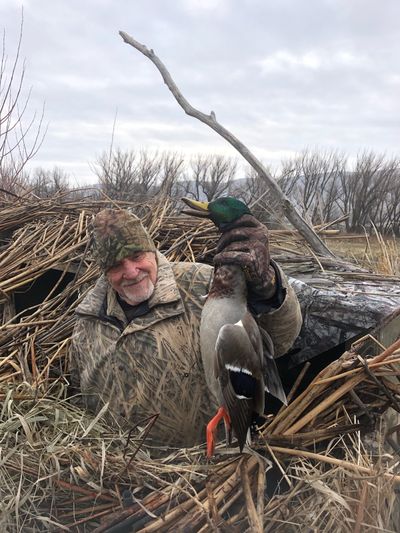S-R Hunting Outlook 2021: Hard-to-predict waterfowl show promise

This waterfowl season is difficult to predict, as the USFWS Waterfowl Breeding Duck Population and Habitat Survey was canceled for the second time because of the COVID virus.
Unlike last year, when the prairie potholes regions were full of water, news from the prairie states and Canada is mixed.
Most breeding populations are doing well, but dry conditions prevented a successful spring for nesting ducks. This means Washington and Idaho hunters will be seeing mostly adult birds. Goose hunters should be pleased, though, as resident honkers continue to thrive and populations of white-fronted (specklebellies) and light geese (snows, blues and Ross’s) continue to build.
Seasons
The Washington waterfowl general hunting season begins Oct. 16. It runs through Oct. 24, closes, and then reopens Oct. 27, continuing through Jan. 30.
In the Idaho Panhandle (Region 1), it begins the same day but ends Jan. 28 without interruption. Duck hunters in both states will have a limit of seven birds, only one of which may be a pintail and only two of which may be a hen mallard, scaup, canvasback or redhead. Scaup do not open until Nov. 4 in Idaho and Nov. 5 in Washington.
In Eastern Washington, a youth-only hunting day for geese only is Sept. 26 (Canada and whitefronts), and on Oct. 2, a one-day duck and goose hunt. Allowable species during these dates are ducks (including scaup), coots and Canada and white-fronted geese. Feb. 5 will be a one-day hunt for youth, veterans and active military. In Idaho, a youth and veterans/active military waterfowl weekend will be Sept. 25-26.
General-season goose hunting in Eastern Washington will begin in Goose Management Area 4 on the same days as ducks and will be allowed on Saturdays, Sundays, Wednesdays and special holidays and every day Jan. 25-31.
In Area 5, the general-season goose season will run every day from Oct. 17-Nov. 2 and Nov. 7-Jan. 31. The limit for geese will be four Canadas, six light and 10 white-fronted daily. The Idaho Canada goose season in Region 1 is the same as the duck season. The light geese (daily limit 20) and specklebelly (daily limit 20) season is Oct. 19-Jan. 31.
Outlook
Given the limited number of local nesting ducks and poor nesting conditions, counties which are dependent upon migrant waterfowl will see below-average duck hunting early in the season. Most of the ponds are dry. Wildlife areas and state lands managed by the Department of Natural Resources will hold birds late in the season.
Concentrations of birds will be found in the wetlands and rivers around McNary National Wildlife Refuge and the Columbia and Snake River valleys. Migrant birds should find enough food to keep them in the area as long as it is not covered with heavy snow.
Duck hunting opportunities are also available on several National Wildlife Refuges and properties managed by the Bureau of Land Management. Potholes Reservoir, Moses Lake, and the creeks and wasteways connecting them have always had the best duck hunting in Washington. Grant County, particularly the Royal Slope area, is a top goose-hunting spot.
The upper Pend Oreille River offers the best general late waterfowl hunting opportunity within Northeast Washington and North Idaho.
Other than the east shoreline, alongside the Kalispell Indian Reservation, most of the river is open for hunting, along with a number of islands. During peak migration periods in December, redheads, goldeneyes and Canada geese show up in good numbers.